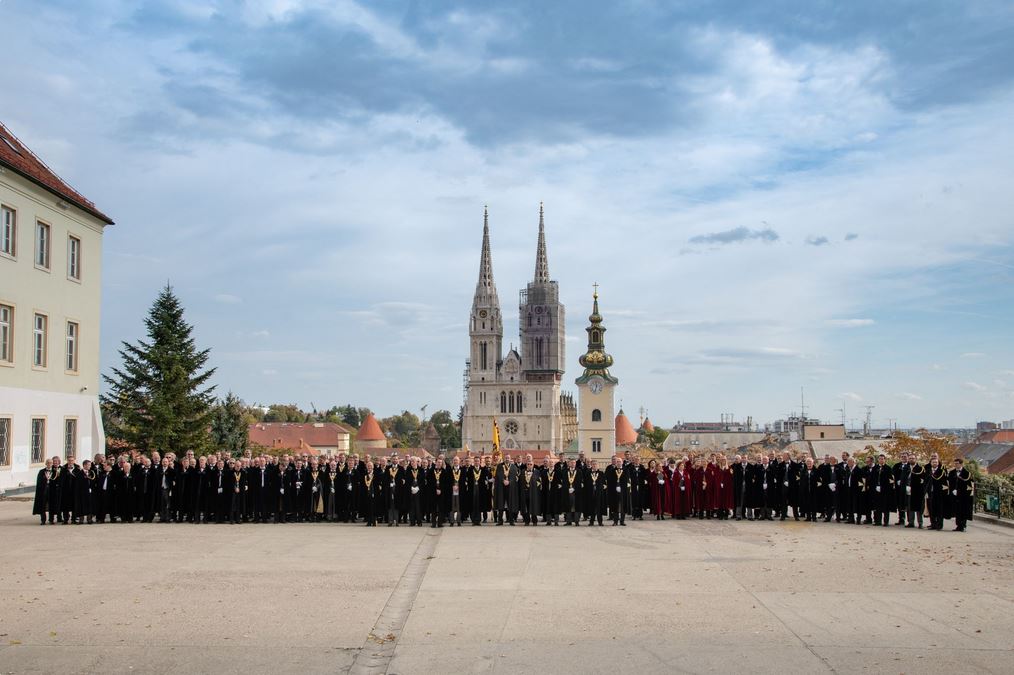The fact that the Order of St. George – a European order of the House of Habsburg-Lothringen – held its religious day in Zagreb almost exactly one hundred years to the day after the end of the constitutional relationship between Croatia and the Austro-Hungarian monarchy, increased the symbolic power of the event enormously . Completely different from what one might have expected in 1918, today’s Croatia feels more deeply connected than ever to the monarchy and the House of Habsburg. That was also noticeable on that religious day at the end of October. Habsburg is not yesterday. In Croatia, Habsburg is the present and the future.
The day before the day of the Order (October 26th) it became apparent how closely one feels to be connected to the former ruling family. It was not without reason that the meeting of the Order Council took place in the Mimara Museum, of all places. SKKH Archduke Karl von Habsburg-Lothringen, the Grand Master of the order, set up his office at the time of the Yugoslav wars at this very place. His services to the recognition of the state of Croatia at that time have not been forgotten.
In the morning hours of the following day (October 27th) the time had come: 300 ladies and knights of the order gathered to stand on St. Mark’s Square, i.e. directly in front of the seat of the Croatian state government and in front of the Romanesque St. Mark’s Church, one of the oldest architectural monuments the city, which was redesigned in neo-Gothic style during the period of the monarchy. After the emperor’s hymn had been played and the message to the Grand Master had been sounded, the assembled members of the order moved in a formed column in the direction of the University Church of St. Catherine, where the celebratory mass and subsequent investiture took place. The rector of the Zagreb Cathedral Msgr. Josip Kuhtić acted as celebrant. The university church was selected for the festive mass at the suggestion of Cardinal Josip Bozanić, Archbishop of Zagreb. It embodies the tradition of the nobility in Croatia: During the Turkish sieges, the church was destroyed twice and, with donations from the Croatian nobility, rebuilt in 1632 as the city’s most beautiful sacral baroque building. The festive mass was accompanied by liturgical chants in Croatian, Latin and Old Slavonic. At the investiture, around 60 postulants and 5 postulants were accepted into the order. The order now has almost 700 members.
After a leisurely lunch in the Johann Franck restaurant, to which the Croatian President Kolinda Grabar-Kitarović also attended, the day of the Order culminated – as every time – with a gala dinner in the evening, which this time took place in the Emerald Hall of the Westin Hotel. In addition to the government of the order – above all the Grand Master SKKH Karl von Habsburg, Procurator Baron Vinzenz von Stimpfl-Abele and Chancellor Stefan Schermaier – an envoy from the Croatian President, Mate Granić, and the deputy. Defense Minister, Petar Mihatov, present.
On this occasion, the knights of the Croatian Commanderies presented their Grand Master with a very special gift: Knowing about the Archduke’s fondness for documents from the time of the monarchy, they had a reprint of the Coronation Diploma of the Blessed Emperor Charles of Austria made in the Croatian State Archives, which they Archduke Karl now handed over. But the Grand Master did not arrive empty-handed either. In return, he gave the two Croatian committees the coat of arms of the dynasty and the personal coat of arms of Emperor Franz Joseph I and Emperor Charles IV, made by a friar. Another Knight of the Order presented the Grand Master with a collection of stamps dedicated to the 150th anniversary of the Battle of Lissa. The party continued until late into the night.
The Croatian public did not miss the big meeting of the Order. All media, from radio and television to the most important daily newspapers, devoted detailed reports to the religious day.
It was a really successful day of the Order and Emperor Franz Joseph I would have said: “It was very nice, I was very happy!”.

